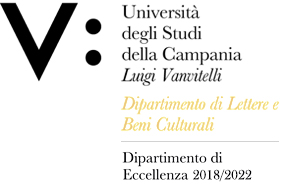Ciro PERNA
Insegnamento di LETTERATURA ITALIANA
Corso di laurea magistrale in FILOLOGIA CLASSICA E MODERNA
SSD: L-FIL-LET/10
CFU: 12,00
ORE PER UNITÀ DIDATTICA: 60,00
Periodo di Erogazione: Primo Semestre
Italiano
| Lingua di insegnamento | italiano |
| Contenuti | I classici nella ricezione della Divina Commedia (XIV-XV sec) "per verba et imagines" |
| Testi di riferimento | - S. Bellomo, Dizionario dei commentatori danteschi, Firenze, Olschki, 2004 |
| Obiettivi formativi | Descrittori: 1. conoscenza e comprensione; 2. capacità di applicare conoscenza e comprensione; 3. autonomia di giudizio; 4. abilità comunicative; 5. capacità di apprendimento. |
| Prerequisiti | Approfondita conoscenza delle opere di Dante, con particolare riferimento alla Divina Commedia; conoscenza del contesto storico di riferimento. |
| Metodologie didattiche | Lezione frontale; esercitazioni di lettura dei manoscritti. |
| Metodi di valutazione | Esame orale |
| Altre informazioni | . |
| Programma del corso | Sarà fornito materiale didattico a lezione e di volta in volta condiviso su cloud. |
English
| Teaching language | italian |
| Contents | The classics in the reception of the Divine Comedy (14th-15th Centuries) "per verba et imagines" |
| Textbook and course materials | - S. Bellomo, Dizionario dei commentatori danteschi, Firenze, Olschki, 2004 |
| Course objectives | Learning outcomes. Indicators: 1. knowledge and understanding; 2. ability to apply knowledge and understanding; 3. autonomy of judgment; 4. communication skills; 5. learning skills. |
| Prerequisites | In-depth knowledge of Dante's works, with particular reference to the Divine Comedy; knowledge of the historical context. |
| Teaching methods | Frontal lesson; reading exercises of manuscripts. |
| Evaluation methods | Oral exam |
| Other information | . |
| Course Syllabus | Teaching material will be provided in class and shared on a cloud from time to time. |








